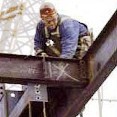
The agency detailed 12 inspectors to conduct 96 safety inspections at 46 construction sites throughout the city from June 23 to July 3. Citations were issued to 60 contractors for 129 violations with a total of $247,400 in proposed fines during the period.

The company was cited for failing to document and implement provisions of OSHA's PSM standard concerning equipment deficiencies, operator training, and safe working practices, among other things, following an explosion in April resulting from the release of flammable liquid and vapor from an open piping system during preparation for maintenance.
A public meeting focusing on the draft document's thoroughness and scientific and technical soundness is slated for Jan. 22, 2009 in Cincinnati. Written comments are being accepted from Oct. 15, 2008, through Jan. 31, 2009.
In addition to limiting the radioactive waste dose limit to 15 millirem per year for the first 10,000 years after disposal, the final standard will require the Department of Energy to consider the effects of climate change, earthquakes, volcanoes, and corrosion of the waste packages to safely contain the waste during a 1 million-year period.

The award honors "distinguished contributions to the chemical industry," and on May 6, 2009, Charles O. Holliday Jr. will be the third DuPont leader to receive it.
The findings of posttraumatic stress disorder (PTSD) in World Trade Center workers are similar to those encountered in U.S. war veterans returning from Afghanistan, researchers say.
The U.S. Food and Drug Administration recently announced the selection of ten contractors to receive up to a total of $2.5 billion for information technology (IT) and data center management services over the next ten years.
According to EPA, the Mattoon, Wis.-based manufacturer failed to comply with certain requirements of its state operating permit for its wood-fired boiler that emits air pollutants, including particulate matter (smoke, dust, ash) into the atmosphere.
"Facilities that use toxic chemicals must provide complete and accurate information about these chemicals so residents and emergency responders are aware of possible chemical hazards in the community," said Enrique Manzanilla, Communities and Ecosystems director for EPA's Pacific Southwest region.
The American Industrial Hygiene Association (AIHA) recently announced they are working on an action plan to address Consumer Product Safety Commission (CPSC) requirements that were issued Monday, Sept. 22, for the accreditation of third party conformity assessment bodies (laboratories) to test children's products for lead content.
It has always amazed me how a simple thing such as a lack of communication can not only lead to less-than-optimal results, but also that the sub-par performance can sometimes continue for decades! No example of this phenomenon is more readily apparent than the traditional approach used to irrigate injured eyes in commercial or industrial facilities.
Now that American industry seems to have focused all of its energies on the newest hot topic—going “green”—many issues that formerly seemed to grab so much attention, such as the health effects of mold, have faded into the background. The fact is that mold continues to be a problem in the residential, commercial, and industrial markets, and it must be dealt with on an ongoing basis. This article takes a look at the state of mold remediation and what’s new in the area.
EPA said that in August 2007 its inspectors found open and unlabeled containers of hazardous waste at the facility and evidence of a release of used oil, as well as stored containers of hazardous waste without a permit and stored hazardous waste for longer than the 90 days allowed. At the time of the inspection, the company had ceased its pineapple growing operations, the agency noted.
ASSE has launched its 7th annual kids' "Safety-on-the-Job" poster contest, which is open to ASSE members' children, grandchildren, nieces, and nephews, and will have a Valentine's Day, Feb. 14, 2009, deadline.
The U.S. Centers for Disease Control and Prevention has awarded $24 million to fund 55 projects in 29 state and local public health departments that could serve as innovative approaches for influenza pandemic preparedness.
Carbon monoxide gas is colorless, tasteless, odorless and non-irritating and cannot be detected by any of the senses. Because it is not readily detected, employees can be exposed to very high levels without realizing there is a problem.
Seven standards, one guideline, and various addenda to standards are open for review. Plus, the association is proposing the withdrawal of Standard 52.1-1992 "Gravimetric and Dust-Spot Procedures for Testing Air-Cleaning Devices Used in General Ventilation for Removing Particulate Matter."
Researchers also found the risk of ischemic stroke increased by 56 percent, while the risk of coronary heart disease increased by 69 percent compared to those who were never exposed to secondhand smoke.
OSHA's inspection found that the office did not provide the injured employee with no-cost, post-exposure medical evaluation and follow-up, and did not have the blood of the source individual tested, as required under OSHA's bloodborne pathogens standard.
The funds, awarded to the Texas Workforce Commission, will be used to provide temporary employment on projects for the cleanup, demolition, repair, renovation and reconstruction of destroyed public structures, facilities and lands within the affected communities.